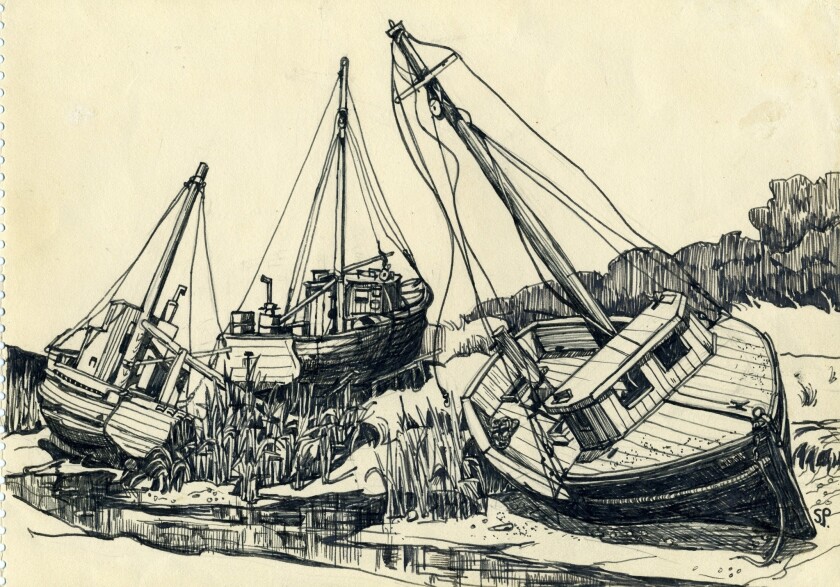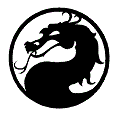
The art of Sylvia Plath
BY DAVID L. ULIN
DEC. 12, 2013 12 AM PT
LOS ANGELES TIMES BOOK CRITIC
Produced during the two years the poet spent on a Fulbright fellowship at Cambridge — the same period in which she met and married (secretly, at first) Ted Hughes — this material evokes a world bound almost entirely by objects: boats, shoes, rooftops, all of it detailed, shadowed, but at the same time more than a little bit removed.
That’s not entirely unexpected. Plath, who gassed herself to death on Feb. 11, 1963, at the age of 30, was a poet of nuance, gesture; “Dead hands, dead stringencies,” she wrote in “Ariel.”
Such a line might be a fitting epigraph for “Drawings,” with its silent churches and solitary flowers, its boats left empty by the shore. Among the most evocative images here is that of a citronnade stand in the Tuilleries of Paris — one of the few drawings to include people, although they are abstracted, rendered at a distance, more geometric shapes than human beings.
Plath took her drawings seriously; four of them, which she called “the best sketches in pen-and-ink I’ve ever done,” were published, with a brief prose recollection called “Sketchbook of a Spanish Summer,” in the Christian Science Monitor in 1956.
Even more, her daughter Frieda Hughes suggests in a brief introduction, drawing was part of her process, a way to settle down. “In his poem ‘Drawing,’” Hughes writes of her father, “he describes how the very act calmed my mother, and how she became focused and still.”
In another poem, Hughes presents Plath recreating “the Paris roofs, a traffic bollard, a bottle, and him too.”
Those drawings — or ones very much like them — appear in “Drawings,” including a brooding portrait of Hughes in pen and ink. It’s the only piece in the book to record a face, albeit in profile, evoking Plath’s husband in a telling posture of disconnection, with even the most glancing contact more than either of them can bear.
Such an image stands in contrast to Plath’s own words here about the relationship, which are recorded in a small sampling of letters, one to Hughes and a couple to her mother. In October 1956, she enthuses, “I write and think and study perfectly when with him; apart, I’m split and only can work properly in brief, stoic spells …”
Plath and Hughes, of course, would come apart spectacularly, and she would commit suicide, after writing the astonishing poems of “Ariel.” This was still some years off when she produced these drawings, but in their distance, in their isolation, we see a glimmer, perhaps, of that empty, farther shore.
David L. Ulin is the former book critic of the Los Angeles Times. A 2015 Guggenheim Fellow, he is the author or editor of nine books, including “Sidewalking: Coming to Terms with Los Angeles,” the novella “Labyrinth,” “The Lost Art of Reading: Why Books Matter in a Distracted Time” and the Library of America’s “Writing Los Angeles: A Literary Anthology,” which won a California Book Award. He left The Times in 2015.
LOS ANGELES TIMES


No comments:
Post a Comment